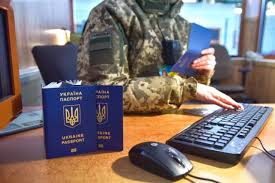
Passenger traffic across the Ukrainian border in the week of December 21-27 increased by another 12.5% compared to the previous week, to 657,000, primarily due to a sharp increase on the weekend before Christmas, when it reached 133-136,000 people per day.
According to the State Border Guard Service’s Facebook page, the number of outbound crossings increased from 294,000 to 325,000, while the number of inbound crossings increased from 290,000 to 332,000.
At the same time, the number of vehicles crossing the checkpoints decreased from 134 thousand to 117 thousand over the week, while the flow of vehicles with humanitarian cargo decreased from 633 to 471.
“We would like to draw the attention of citizens crossing the border at Krakovets, Uhryniv and Rava-Ruska checkpoints. There is a certain accumulation of vehicles leaving Ukraine,” the State Border Guard Service said on Sunday.
On the border with Poland, as of 18:00, there were queues at the checkpoints Krakovets (80 cars), Ustyluh (65), Uhryniv (30) and Rava-Ruska (10).
On the border with Hungary, the longest queue is at Tisa checkpoint – 15 cars, while Luzhanka has 10, Kosyno and Vylok – 5 cars each.
At the Maly Berezny checkpoint on the border with Slovakia, 25 cars have accumulated, while at the Uzhhorod checkpoint, 6 buses have accumulated.
The total number of people crossing the border in the fourth week of winter this year is higher than last year’s: 280 thousand people left Ukraine and 302 thousand entered during the same seven days, with a traffic of 110 thousand cars.
Last year, passenger traffic decreased by 3.6% during this week, while the following week it dropped by another 18.4%.
As reported, on May 10, 2022, the outflow of refugees from Ukraine, which began with the outbreak of war, was replaced by an influx that lasted until September 23, 2022 and amounted to 409 thousand people. However, since the end of September, possibly under the influence of news about mobilization in Russia and “pseudo-referendums” in the occupied territories, and then massive shelling of energy infrastructure, the number of people leaving has been exceeding the number of people entering. It temporarily stopped in the second half of December and early January during the holidays, but then resumed again and reached a total of 223 thousand people from the end of September 2022 to the first anniversary of the full-scale war.
During the second year of the full-scale war, the number of border crossings to leave Ukraine, according to the State Border Guard Service, exceeded the number of crossings to enter by 25 thousand, while since the beginning of the third year, the number of crossings has increased by another 191 thousand.
As Deputy Economy Minister Serhiy Sobolev noted in early March last year, the return of every 100,000 Ukrainians home results in a 0.5% increase in GDP. In its macroeconomic forecast for this year, the Ministry of Economy has included 1.5 million people returning to Ukraine.
At the same time, the National Bank, in its October inflation report, again downgraded its forecast for the outflow from Ukraine this year from 0.4 million to 0.5 million. In absolute terms, the number of migrants staying abroad is expected to increase to 6.8 million this year.
According to updated UNHCR data, the number of Ukrainian refugees in Europe was estimated at 6.254 million as of December 16 this year, and 6.814 million in the world in general, which is 28 thousand more than as of November 18 this year.
In Ukraine, according to the latest UN data as of August this year, there were 3.669 million internally displaced persons (IDPs), which is 121 thousand more than in April this year.
According to regional authorities cited by the UN, more than 128,000 people have left Donetsk region in eastern Ukraine since August 1, including 24,000 who fled active hostilities, while approximately 330,000 remain in the region, including approximately 63,000 in active combat zones.
In Sumy region, the authorities estimate that 36,000 people, including 6,000 children, were evacuated between August 1 and October 3.